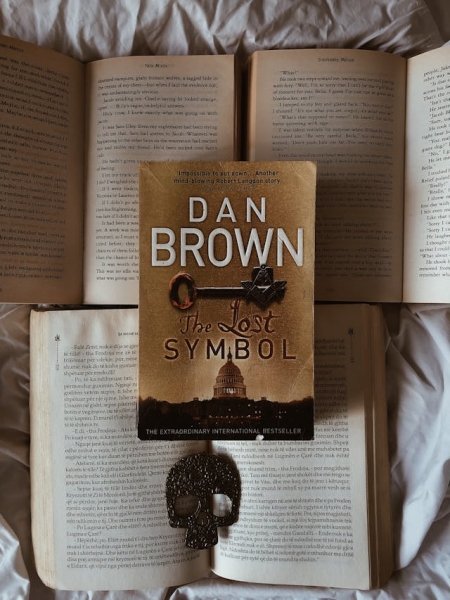Beyond the Blurb: Unveiling the Secrets of Thoughtful Book Reviews

In the sizeable and ever-expanding universe of literature, book reviews function guiding stars, illuminating the path for readers to find out their next literary journey. However, amidst the ocean of evaluations and summaries, the distinction among superficial reviews and considerate evaluation frequently blurs. Hence, the reason of this text is to delve deep into the art of crafting significant book reviews, uncovering the secrets that elevate mere critiques to profound reflections on literature.
Understanding Thoughtful Book Reviews
At the core of every thoughtful book review lies an appreciation for the intricate details that render each literary work distinctive. These evaluations aren't simply summaries but explorations into the very heart of the narrative. They delve beyond the surface, meticulously dissecting the underlying issues, nuances of character development, and the stylistic choices of the author. By scrutinizing these elements with insight, thoughtful reviewers discover layers of meaning that would otherwise continue to be hidden, supplying readers a richer expertise of the text.
Critical analysis serves as the linchpin of this approach, propelling reviewers past the realm of personal opinion to light up broader implications and cultural importance. Rather than merely passing judgment, thoughtful reviewers interact in a nuanced examination of the textual content, considering its place within the literary canon and its resonance in modern society. This analytical lens lets in for a deeper appreciation of the complexities inherent inside the narrative, inviting readers to ponder now only the story itself but also its implications on a broader scale. Moreover, with the aid of embracing empathy and perspective, reviewers forge a profound connection among the author's motive and the reader's experience, bridging the distance between creator and target audience in a symbiotic exchange of meaning and interpretation.
Essential Elements of a Thoughtful Book Review
- Concise Synopsis: Begin by means of offering a brief overview of the plot, capturing the essence of the narrative without revealing an excessive amount of detail or spoiling key moments.
- In-depth Analysis: Delve beyond the surface level of the story to explore its underlying topics, character motivations, and the author's stylistic selections. Offer insights into the symbolism, metaphorical elements, and narrative strategies hired by way of the writer.
- Character Motivations: Analyze the driving forces behind the actions and selections of the characters, considering their inner conflicts, desires, and growth all through the narrative.
- Themes Exploration: Identify and dissect the central themes or messages conveyed by means of the text, analyzing how they're evolved and resolved throughout the story. Consider the relevance of these issues to broader social, cultural, or philosophical contexts.
- Stylistic Choices: Evaluate the author's writing style, which includes their use of language, imagery, and narrative structure. Discuss how these stylistic choices contribute to the overall impact and effectiveness of the storytelling.
- Contextual Understanding: Provide context by discussing the book's place within the broader literary panorama. Consider factors including the writer's background, literary influences, and historical or cultural references that may inform the reader's interpretation.
- Significance Assessment: Assess the importance of the book within its genre or literary tradition, highlighting any innovations, subversions, or contributions. Consider how the book resonates with modern issues or enduring themes.
- Reader Engagement: Encourage reader engagement through inviting reflection and discussion. Pose thought-provoking questions or prompts that prompt readers to consider their interpretations and responses to the text.
Practical Tips for Writing Thoughtful Book Reviews
Active reading serves as the cornerstone of crafting insightful reviews. When attracted with a text, it's vital to immerse oneself absolutely, actively engaging with the material rather than passively consuming it. Taking notes and highlighting key passages not only helps in capturing the essence of the narrative but also aids in figuring out motifs, symbolic imagery, and narrative devices employed by the writer. These annotations function precious reference factors while crafting the review, allowing the reviewer to draw upon examples to assist their analysis and arguments.
In the drafting degree of the review process, effective structuring of thoughts is paramount to ensure readability and coherence. Begin via presenting a concise precis of the book, capturing its central premise and major plot points. Then, delve into a detailed analysis of key themes, characters, and literary elements, supported by evidence drawn directly from the text. Incorporating quotes and specific examples adds intensity to the review but additionally presents readers with tangible evidence to validate the reviewer's interpretations. Once the initial draft is complete, thorough editing and revising are essential steps to refine the review further. Paying attention to language, tone, and organization, the reviewer can polish the review for clarity, coherence, and impact, making sure that every phrase serves a purpose in conveying the reviewer's insights efficiently.
In conclusion, crafting a thoughtful book review requires a combination of insight, empathy, and critical analysis. By understanding the elements that distinguish superficial reviews from profound reflections, readers can unlock the secrets and techniques to crafting meaningful insights into literature. Armed with practical tips and a deeper understanding of the review procedure, aspiring reviewers are empowered to interact greater thoughtfully with the world of books, enriching their very own reading experiences and contributing to the vibrant literary discourse.
In essence, beyond the mere blurb lies a world of untold stories and uncharted depths waiting to be explored. Let us embark on this journey together, armed with the tools and insights to navigate the literary landscape with interest, compassion, and a keen eye for detail.




